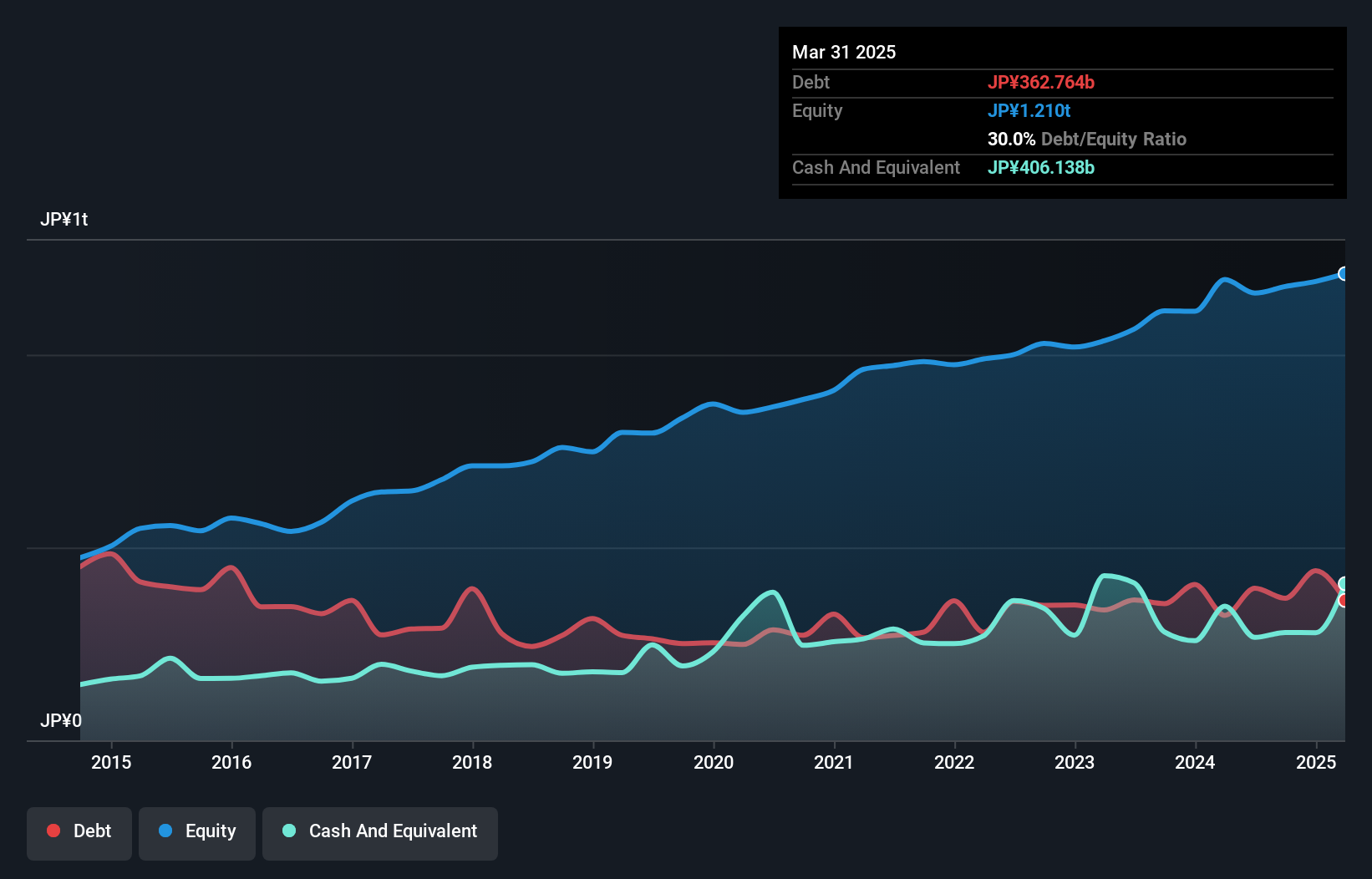David Iben put it well when he said, 'Volatility is not a risk we care about. What we care about is avoiding the permanent loss of capital.' When we think about how risky a company is, we always like to look at its use of debt, since debt overload can lead to ruin. We can see that Obayashi Corporation (TSE:1802) does use debt in its business. But should shareholders be worried about its use of debt?
When Is Debt A Problem?
Debt assists a business until the business has trouble paying it off, either with new capital or with free cash flow. In the worst case scenario, a company can go bankrupt if it cannot pay its creditors. However, a more common (but still painful) scenario is that it has to raise new equity capital at a low price, thus permanently diluting shareholders. Of course, the upside of debt is that it often represents cheap capital, especially when it replaces dilution in a company with the ability to reinvest at high rates of return. When we examine debt levels, we first consider both cash and debt levels, together.
What Is Obayashi's Net Debt?
The image below, which you can click on for greater detail, shows that at March 2025 Obayashi had debt of JP¥362.8b, up from JP¥323.9b in one year. But on the other hand it also has JP¥406.1b in cash, leading to a JP¥43.4b net cash position.

How Healthy Is Obayashi's Balance Sheet?
The latest balance sheet data shows that Obayashi had liabilities of JP¥1.45t due within a year, and liabilities of JP¥379.2b falling due after that. Offsetting these obligations, it had cash of JP¥406.1b as well as receivables valued at JP¥1.24t due within 12 months. So its liabilities total JP¥182.1b more than the combination of its cash and short-term receivables.
Given Obayashi has a humongous market capitalization of JP¥1.51t, it's hard to believe these liabilities pose much threat. Having said that, it's clear that we should continue to monitor its balance sheet, lest it change for the worse. While it does have liabilities worth noting, Obayashi also has more cash than debt, so we're pretty confident it can manage its debt safely.
View our latest analysis for Obayashi
On top of that, Obayashi grew its EBIT by 81% over the last twelve months, and that growth will make it easier to handle its debt. There's no doubt that we learn most about debt from the balance sheet. But it is future earnings, more than anything, that will determine Obayashi's ability to maintain a healthy balance sheet going forward. So if you're focused on the future you can check out this free report showing analyst profit forecasts.
Finally, while the tax-man may adore accounting profits, lenders only accept cold hard cash. Obayashi may have net cash on the balance sheet, but it is still interesting to look at how well the business converts its earnings before interest and tax (EBIT) to free cash flow, because that will influence both its need for, and its capacity to manage debt. Looking at the most recent three years, Obayashi recorded free cash flow of 44% of its EBIT, which is weaker than we'd expect. That's not great, when it comes to paying down debt.
Summing Up
While Obayashi does have more liabilities than liquid assets, it also has net cash of JP¥43.4b. And we liked the look of last year's 81% year-on-year EBIT growth. So is Obayashi's debt a risk? It doesn't seem so to us. When analysing debt levels, the balance sheet is the obvious place to start. However, not all investment risk resides within the balance sheet - far from it. These risks can be hard to spot. Every company has them, and we've spotted 3 warning signs for Obayashi (of which 1 makes us a bit uncomfortable!) you should know about.
If you're interested in investing in businesses that can grow profits without the burden of debt, then check out this free list of growing businesses that have net cash on the balance sheet.
New: AI Stock Screener & Alerts
Our new AI Stock Screener scans the market every day to uncover opportunities.
• Dividend Powerhouses (3%+ Yield)
• Undervalued Small Caps with Insider Buying
• High growth Tech and AI Companies
Or build your own from over 50 metrics.
Have feedback on this article? Concerned about the content? Get in touch with us directly. Alternatively, email editorial-team (at) simplywallst.com.
This article by Simply Wall St is general in nature. We provide commentary based on historical data and analyst forecasts only using an unbiased methodology and our articles are not intended to be financial advice. It does not constitute a recommendation to buy or sell any stock, and does not take account of your objectives, or your financial situation. We aim to bring you long-term focused analysis driven by fundamental data. Note that our analysis may not factor in the latest price-sensitive company announcements or qualitative material. Simply Wall St has no position in any stocks mentioned.
About TSE:1802
Obayashi
Engages in the construction business in Japan, North America, Asia and internationally.
Flawless balance sheet and undervalued.
Similar Companies
Market Insights
Community Narratives





